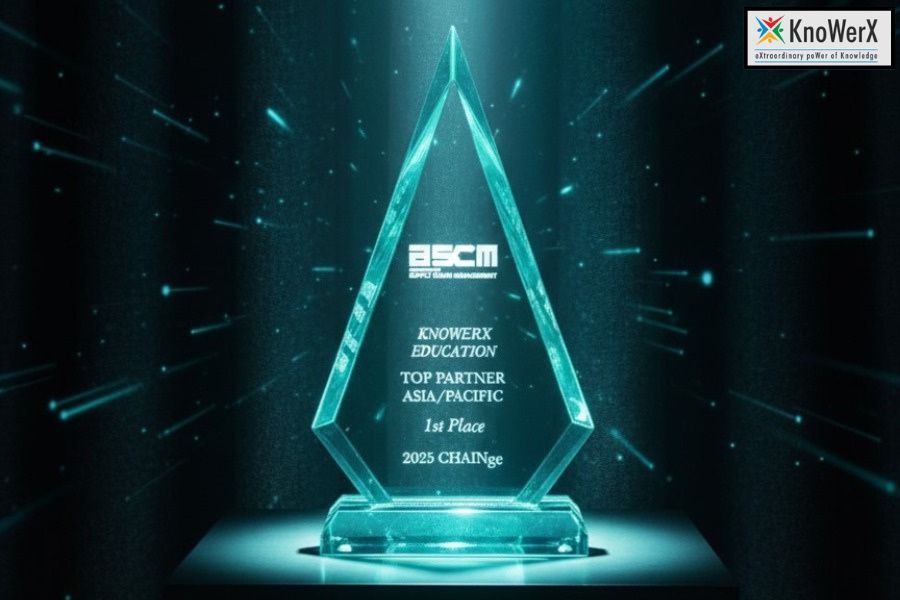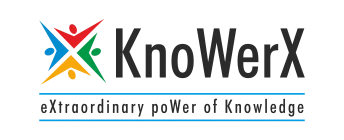The Future of Supply Chain: Key Components Revealed

The Future of Supply Chain: Key Components Revealed The Future of Supply Chain is unfolding faster than anyone expected. With businesses facing unpredictable markets, rising customer expectations, and continuous global disruptions, organizations can no longer rely on traditional supply chain models. Today, leaders must understand how digital innovation, sustainability, and resilience are reshaping operations across industries. As companies prepare for long-term growth, exploring the Future of Supply Chain becomes essential to stay competitive, agile, and relevant. What Is Driving the Future of Supply Chain? The Future of Supply Chain is not defined by a single trend it is driven by a powerful mix of global, digital, and organizational forces. Globalization 2.0 Shifts in trade regulations, geopolitical tensions, and new regional alliances have pushed companies to rethink sourcing models. The Future of Supply Chain will see more regional supply hubs, shorter networks, and diversified supplier bases. Sustainability Pressures Governments and customers now expect transparency, ethical sourcing, and carbon reduction. This is reshaping logistics, manufacturing, and distribution strategies at every level. Technology Acceleration Industry 4.0 tools like automation, AI, and IoT are becoming everyday essentials. In the Future of Supply Chain, technology will be the backbone of all planning, forecasting, and execution systems. The Demand for Speed and Transparency Same-day delivery, personalized experiences, and real-time visibility are now standard expectations. This demand will continue shaping the Future of Supply Chain, pushing companies to innovate at a rapid pace. Key Components Shaping the Future of Supply Chain AI, ML & Predictive Intelligence Artificial intelligence and machine learning are the drivers of smart decision-making. In the Future of Supply Chain, AI-powered demand forecasting, route optimization, and risk alerts will help organizations act proactively instead of reactively. Automation & Robotics Warehouses are rapidly adopting robotic systems, automated picking, and autonomous trucks. These technologies will dramatically improve speed and accuracy in the Future of Supply Chain. IoT for Real-Time Visibility With IoT devices attached to trucks, pallets, and equipment, companies will track goods at every step. Real-time insights will ensure better planning and faster responses critical for the Future of Supply Chain. Blockchain for Secure Operations Blockchain builds trust and transparency across partners. In Supply Chain, it will streamline contracts, reduce fraud, and enhance traceability from source to destination. Supply Chain Resilience & Risk Management From Linear to Networked Models Traditional linear supply chains are no longer effective. The Future of Supply Chain will be dynamic, interconnected, and flexible able to adjust instantly to disruptions. Scenario Planning and Stress Testing Businesses now run simulations to prepare for multiple risks pandemics, natural disasters, or supplier failures. This strategic planning is a significant part of the Future of Supply Chain. Diversified Sourcing Models To reduce dependency on single suppliers or regions, companies are embracing near-shoring, multi-sourcing, and local manufacturing all core to the Supply Chain. Sustainability & Green Logistics Decarbonization Efforts The Future of Supply Chain will focus heavily on carbon-neutral operations. Businesses are switching to renewable energy, low-emission vehicles, and eco-friendly packaging. Circular Economy Models In the Future of Supply Chain, reuse, recycling, and refurbishing will become standard practices especially in retail, electronics, and consumer goods industries. ESG Compliance and Reporting Organizations must now align with environmental and governance standards. This responsibility will drive major strategy shifts in the Supply Chain. Customer-Centric Supply Chain Models Hyper-Personalization Customers expect products that feel tailored to them. The Supply Chain Future will integrate data-driven personalization in production, delivery, and service. Demand-Driven Fulfilment Accurate forecasting and agile planning will help businesses respond instantly to changing demand. This responsiveness is a core feature of Supply Chain in future . Omnichannel Distribution Retailers and brands must deliver a seamless experience across online and offline channels. As Supply Chain evolves, omnichannel networks will become the standard model. Data & Visibility: The New Supply Chain Currency Data is the foundation of Supply Chain. To remain competitive, companies need real-time visibility and intelligent analysis. Real-Time Information Flow Instant data sharing across suppliers, manufacturers, and logistics teams improves accuracy and helps resolve issues faster. This transparency defines the Future of Supply Chain. Digital Control Towers Digital control towers provide a central hub for monitoring activities across the network. In the Future of Supply Chain, these platforms will be critical for forecasting, planning, and decision-making. Digital Twins Digital twins simulate supply chain operations and help identify gaps and opportunities. This tool will transform scenario planning in the Future of Supply Chain. Workforce of the Future New Skill Requirements Data literacy, analytical thinking, and digital proficiency will become essential skills for supply chain professionals. The Future of Supply Chain demands talent that can work alongside advanced technologies. Human-Machine Collaboration Automation will not replace people; it will enhance their capabilities. Supply Chain in future , workers and machines will collaborate to improve speed and efficiency. Remote & Virtual Operations Remote monitoring, digital collaboration, and virtual command centers will become everyday tools in Supply Chain. Cybersecurity as a Core Supply Chain Priority Rising Digital Threats More digital connections mean higher cyber risks. Protecting data and systems will be a top priority of Supply Chain in the Future. Building Secure Infrastructure Companies must invest in authentication systems, encrypted networks, and continuous monitoring. Strong cybersecurity will define Supply Chain. Proactive Risk Mitigation Regular audits, employee training, and resilience planning will help companies stay protected Supply Chain. The Role of Collaboration & Ecosystem Integration Unified Partner Networks The Future of Supply Chain relies on seamless collaboration across suppliers, manufacturers, logistics providers, and technology partners. Cloud-Based Collaboration Cloud systems enable faster communication, data sharing, and problem resolution key pillars of the Future of Supply Chain. Innovation Through Ecosystems When partners collaborate openly, innovation accelerates. This ecosystem approach is one of the strongest drivers shaping Supply Chain. Challenges Ahead High Cost of Transformation Digital adoption requires investment in systems, skills, and infrastructure a major challenge on the path to the Future of Supply Chain. Rapid Technology Shifts Constant innovation means companies must continuously adapt, which makes Supply Chain both exciting and challenging. Skill Gaps Many
Top Benefits of PGP Certifications for Professionals

Top Benefits of PGP Certifications for Professionals Growth in the professional world no longer depends on experience alone it thrives on specialization, adaptability, and continuous learning. PGP Certifications for Professionals by KnoWerX are redefining what it means to stay relevant and competitive in the evolving world of supply chain management. These programs aren’t just about earning credentials; they’re about transforming potential into performance. They equip professionals with real-world problem-solving skills, strategic thinking abilities, and hands-on industry knowledge that today’s employers value the most. With structured learning, expert guidance, and globally aligned curriculum, KnoWerX ensures every learner is ready to excel in modern, tech-driven supply chains. Tailored Learning for Real-World Application Each certification within the KnoWerX Professional Growth Program (PGP) is designed with a practical focus. Whether it’s the Certified in Forecasting & Demand Management (CFDM), Certified Inventory Management Officer (CIMO), Certified Integrated Business Planner (CIBP), Certified Direct Material Planner (CDMP), or Certified Warehouse Management Professional (CWMP) every course addresses specific, real-world business challenges. Participants don’t just learn concepts; they learn how to apply them to drive measurable results. Global Recognition and Industry Credibility Earning PGP Certifications for Professionals from KnoWerX instantly enhances professional credibility. These globally acknowledged certifications signal to employers that you possess specialized, up-to-date expertise in your domain. It’s a mark of distinction that positions you as a trusted contributor in global supply chain and business planning ecosystems. Enhanced Career Mobility and Opportunities Professionals who hold PGP Certifications for Professionals often experience accelerated career progression. Organizations value certified experts who bring structured thinking, proven methodologies, and decision-making confidence to the table. Whether you aim for leadership roles or want to strengthen your profile for international opportunities, these certifications act as a gateway to new horizons. Building Expertise Across the Supply Chain Spectrum The KnoWerX PGP framework covers every critical pillar of modern supply chain management forecasting, inventory control, integrated business planning, direct material management, and warehouse operations. This structured approach ensures professionals gain a holistic understanding of interconnected business functions, allowing them to optimize processes and improve cross-functional collaboration within their organizations. Future-Ready Skills for a Dynamic Market Markets evolve. Technologies shift. Business models transform. The PGP Certifications for Professionals are designed to prepare individuals for what’s next. From AI-driven demand forecasting to sustainable logistics, participants acquire insights into the latest tools, technologies, and global best practices shaping the future of supply chain excellence. Organizational Impact Beyond Individual Growth Companies that invest in employees with PGP Certifications for Professionals experience measurable performance gains. Certified professionals help streamline operations, reduce inefficiencies, and strengthen business resilience. The result? Smarter decisions, improved profitability, and a culture of continuous improvement. Continuous Learning and Community Connection Beyond the curriculum, KnoWerX fosters a professional community of learners, mentors, and industry experts. Being part of this ecosystem opens doors to lifelong learning, networking, and collaboration empowering professionals to exchange ideas, explore innovations, and stay ahead of industry trends. Frequently Asked Questions Ending Notes – Empower Your Future with KnoWerX The KnoWerX Professional Growth Program (PGP) isn’t just an educational offering it’s a professional transformation journey. Through these PGP Certifications for Professionals, individuals evolve into industry leaders equipped with the skills, confidence, and vision to shape the future of business operations and supply chain excellence. If growth, recognition, and leadership define your career goals, KnoWerX PGP Certifications are your next step toward achieving them. Image Reference: Freepik Disclaimer: All trademarks, logos, and brand names are the property of their respective owners. All company, product, and service names used in this website are for identification purposes only. Use of these names, trademarks, and brands does not imply endorsement.
Test Your Knowledge with Our Supply Chain Management Quiz

Test Your Knowledge with Our Supply Chain Management Quiz In today’s fast-changing business environment, supply chain management plays a critical role in driving efficiency, reducing costs, and enhancing customer satisfaction. Whether you are a student, a working professional, or an industry leader, understanding the core concepts of supply chain operations is essential. But how confident are you about your knowledge? The best way to find out is by taking the Supply Chain Management Quiz by KnoWerX a fun, engaging, and insightful way to evaluate your understanding of this vital business function. Why Take a Supply Chain Management Quiz? A Supply Chain Management Quiz isn’t just about testing what you already know it’s about discovering how supply chains really work in the modern world. Supply chains today are global, digital, and data-driven. They involve forecasting, procurement, logistics, operations, and customer service all integrated into one seamless system. By taking this quiz, you can: Identify your strengths and weaknesses: Understand which supply chain areas you excel in and where you can improve. Reinforce learning: Quizzes help strengthen memory retention and make complex topics easier to recall. Stay competitive: As companies demand professionals with updated supply chain knowledge, self-assessment gives you a career advantage. Boost confidence: Scoring well in a Supply Chain Management Quiz validates your understanding and motivates further learning. What Does the Quiz Cover? Our Supply Chain Management Quiz is designed by experts from KnoWerX, a leading institute in supply chain management education with decades of experience in developing professionals. The quiz covers essential areas such as: Supply Chain Fundamentals Get questions on the basics from definitions of supply chain components to the flow of goods, services, and information between suppliers and customers. Logistics and Transportation Test your knowledge of inventory management, distribution networks, shipping modes, and logistics optimization techniques. Demand Forecasting and Planning Understand how forecasting accuracy affects overall efficiency and how technology supports predictive planning. Procurement and Sourcing Answer questions on supplier selection, contract negotiation, cost analysis, and sustainable sourcing practices. Risk and Resilience Learn how to manage disruptions, identify supply chain risks, and develop strategies for resilience in uncertain times. Emerging Technologies From Artificial Intelligence to Blockchain and IoT see how much you know about how digital transformation is shaping the future of supply chain management. Who Should Take the Supply Chain Management Quiz? This quiz is perfect for: Students pursuing business, operations, or logistics studies. Working professionals aiming to upskill or shift careers into supply chain management. Corporate teams wanting to benchmark their collective knowledge. Industry experts who want to test their understanding of current trends. The Supply Chain Management Quiz is structured for all levels from beginners to seasoned professionals. It challenges your theoretical understanding while also evaluating practical decision-making skills through scenario-based questions. The KnoWerX Edge At KnoWerX – The Institute of Supply Chain Management, we believe that learning should be interactive and continuous. Our Supply Chain Management Quiz is more than just a test it’s a step toward professional excellence. KnoWerX has been at the forefront of supply chain education for over three decades, empowering professionals through internationally recognized certifications such as: Certified in Planning and Inventory Management (CPIM) Certified Supply Chain Professional (CSCP) Certified in Logistics, Transportation, and Distribution (CLTD) Certified Integrated Business Planner (CIBP) Our goal is to help individuals not only learn but also apply that knowledge in real-world situations. The quiz acts as a quick self-assessment to help you decide which certification or training path best fits your career goals. Benefits of Taking the Quiz Taking a Supply Chain Management Quiz offers several professional and personal benefits: Quick Skill Evaluation: Get instant feedback and score analysis. Career Planning: Identify areas for development and plan your learning journey. Competitive Benchmarking: Compare your performance with peers in the industry. Fun and Engaging: Learning doesn’t have to be boring the quiz keeps it interactive and rewarding. Each question is carefully crafted to ensure a balance between concept clarity and industry relevance. It’s an exciting way to keep your knowledge sharp and up to date. How to Get Started Ready to test your skills? Visit the KnoWerX website and take the Supply Chain Management Quiz today. You’ll receive immediate results and insights into your supply chain understanding. Whether you score high or find room for improvement, every result is a step toward mastering supply chain management. Remember, the key to success is continuous learning and this quiz is the perfect way to begin. Frequently Asked Questions Ending Notes The Supply Chain Management Quiz by KnoWerX is more than a challenge; it’s an opportunity to grow. In an era where supply chain agility defines business success, your expertise matters. Use this quiz to measure your knowledge, discover new insights, and pave the way for future growth. At KnoWerX, we’re committed to helping professionals achieve excellence through knowledge, skill, and innovation. Take the quiz and take the first step toward becoming a true supply chain leader. Image Reference: Freepik Disclaimer: All trademarks, logos, and brand names are the property of their respective owners. All company, product, and service names used in this website are for identification purposes only. Use of these names, trademarks, and brands does not imply endorsement.
Why CIBP Certification Matters for Business Leaders

Why CIBP Certification Matters for Business Leaders In a world where business challenges are becoming more dynamic and globalized, leaders need more than just managerial skills they need strategic foresight, agility, and a deep understanding of how all parts of the business connect. This is where the CIBP Certification (Certified Integrated Business Planner) steps in as a game-changer. It equips leaders with the tools and knowledge to make informed, integrated, and future-focused business decisions. At KnoWerX, we believe that successful leadership starts with the right education and continuous professional growth. With over 33 years of collective experience in training and consultancy, KnoWerX has empowered thousands of professionals across India and abroad to build excellence in supply chain management and business planning. Below, we share our expert insights and practical tips on why the CIBP Certification truly matters for business leaders who aim to drive organizational success. Develop a Complete, Integrated Business Vision Leadership isn’t just about managing departments it’s about connecting the dots across every business function. The CIBP Certification enables leaders to see the organization as one cohesive system, where supply chain, operations, finance, and marketing are interconnected. This integrated perspective helps leaders make better strategic decisions that balance operational efficiency with long-term goals. With this certification, you’re no longer reacting to business issues you’re anticipating them. Strengthen Cross-Functional Collaboration Modern organizations often struggle with fragmented communication and siloed operations. The CIBP Certification helps leaders bridge these gaps through integrated business planning techniques. By aligning different departments under a unified strategy, leaders can ensure that everyone from planners to executives works toward the same objective. This synergy not only improves coordination but also drives faster, more effective decision-making across all levels. Master Data-Driven Decision-Making In today’s business environment, intuition alone isn’t enough. The CIBP Certification teaches leaders how to leverage data analytics and scenario planning to make precise, evidence-based decisions. Whether it’s predicting market demand, allocating resources, or managing financial risks, leaders gain the analytical skills to evaluate multiple scenarios and choose the best path forward. By mastering data-driven planning, you position your business to outperform competitors. Build Agility to Navigate Uncertain Markets Disruptions have become the new normal from supply chain breakdowns to shifting consumer demands. The CIBP Certification gives leaders the frameworks to stay agile and resilient under pressure. You’ll learn how to design business models that can adapt quickly to change while maintaining stability and profitability. In an era where uncertainty can make or break a company, this adaptability is one of the greatest assets a leader can possess. Lead Teams with Confidence and Clarity True leadership is about guiding teams through both smooth and challenging times. Through the CIBP Certification, business leaders acquire practical skills to foster collaboration, set clear priorities, and align resources with organizational goals. You’ll gain confidence in leading multifunctional teams, creating synergy, and inspiring innovation. These leadership qualities don’t just improve operations they transform organizational culture. Enhance Operational Efficiency and Business Value The CIBP Certification emphasizes integrated planning methods that eliminate inefficiencies, reduce costs, and optimize resources. Leaders trained under this program understand how to align sales, operations, and financial planning to maximize business value. By connecting strategic goals with day-to-day operations, certified professionals achieve improved productivity, better demand forecasting, and sustainable growth. Earn Global Recognition and Industry Credibility Holding a CIBP Certification instantly sets leaders apart. It’s not just a qualification it’s a mark of credibility and professional excellence recognized by industries worldwide. Employers and peers view certified professionals as individuals who understand the complexities of integrated business planning and can drive measurable results. In an increasingly competitive landscape, this recognition becomes a powerful tool for career advancement and leadership influence. Future-Proof Your Leadership in the Digital Age As technology transforms every industry, business leaders must adapt to digital-first operations. The CIBP Certification integrates modern digital planning tools, AI-driven forecasting, and collaborative planning systems into its curriculum. This ensures that leaders not only stay updated but also become pioneers in adopting data-centric business models. With this future-ready knowledge, you can guide your organization through digital transformation with confidence. Empower Continuous Improvement Businesses thrive when leaders embrace continuous improvement. The CIBP Certification instills a mindset of learning, innovation, and adaptability. It helps leaders identify improvement opportunities, measure performance outcomes, and refine strategies regularly. This commitment to growth builds resilience, allowing organizations to evolve with changing market demands. Frequently Asked Questions Final Thoughts: The KnoWerX Edge At KnoWerX, we believe that the success of any organization depends on the strength and knowledge of its leaders. The CIBP Certification empowers professionals to think strategically, plan collaboratively, and execute with precision. With over 26 years in consultancy and training, KnoWerX has built a strong reputation for providing world-class supply chain and business planning education at the best value in the industry. For leaders who aspire to rise above the competition, the CIBP Certification is more than just an achievement it’s a transformative step toward excellence. By investing in this program, you not only enhance your professional capabilities but also drive your organization toward sustained success in a rapidly evolving business landscape. Take the next step in your leadership journey. Learn, grow, and lead with the CIBP Certification your key to becoming a truly integrated business leader. Image Reference: Freepik Disclaimer: All trademarks, logos, and brand names are the property of their respective owners. All company, product, and service names used in this website are for identification purposes only. Use of these names, trademarks, and brands does not imply endorsement.
Must-Attend Supply Chain Management Events 2025

Must-Attend Supply Chain Management Events 2025 In the fast-changing world of global trade, logistics, and operations, supply chain management continues to evolve faster than ever before. From AI-driven forecasting to sustainable sourcing, the future of supply chains is no longer just about efficiency it’s about resilience, agility, and innovation. As 2025 unfolds, a series of international events are set to redefine how companies design, manage, and optimize their supply networks. These conferences bring together industry leaders, innovators, researchers, and practitioners from around the world to share insights, case studies, and best practices. For professionals looking to sharpen their knowledge, expand their network, and stay ahead of emerging trends, here’s a comprehensive guide to the must-attend supply chain management events in 2025. Key Trends to Focus on at 2025 Events Before diving into the event calendar, it’s essential to understand the dominant themes shaping global supply chain conversations in 2025. Each of these trends will be central to discussions, exhibitions, and workshops throughout the year. Digital Transformation and AI Integration The global supply chain is rapidly digitizing. Artificial Intelligence, predictive analytics, and automation tools are helping organizations gain deeper visibility and improve decision-making. Expect sessions at 2025 events to highlight how AI-driven demand forecasting, digital twins, and robotic process automation are redefining planning and operations. Professionals attending these conferences will explore how digital technologies can streamline workflows, minimize human errors, and enhance end-to-end efficiency. Sustainability and Green Supply Chains Environmental responsibility is no longer optional it’s a core business priority. 2025 will see supply chain leaders focus heavily on sustainable logistics, carbon reduction, and circular economy models. From packaging innovations to renewable energy sourcing, events this year will showcase solutions that balance profitability with planet-friendly practices. Organizations that embed sustainability into their supply chains will gain long-term credibility and compliance advantages. Resilience and Risk Management The lessons from recent years pandemic disruptions, geopolitical tensions, and raw material shortages have transformed how companies view supply chain resilience. 2025 events will emphasize risk mitigation frameworks, scenario planning, and multi-sourcing strategies to build adaptable and shock-resistant supply chains. Industry experts will share strategies for managing volatility and ensuring continuity in the face of global uncertainty. Data-Driven Decision Making With the explosion of real-time data, analytics tools are becoming the backbone of supply chain intelligence. Conferences in 2025 will showcase how cloud computing, IoT, and predictive analytics empower leaders to make faster, smarter decisions. The focus will be on creating data ecosystems that unify suppliers, distributors, and customers ensuring every link in the chain is visible and efficient. Talent Development and Leadership A great supply chain needs great people. Upskilling and leadership development will remain top priorities in 2025. The industry is facing a global talent shortage, and companies that invest in training and professional certification will lead the next era of growth. Workshops and leadership sessions at these events will discuss how professionals can future-proof their careers with certifications such as Certified in Planning and Inventory Management (CPIM), Certified Supply Chain Professional (CSCP), and Certified Integrated Business Planner (CIBP) offered by institutions like KnoWerX. Major Global and North American Conferences North America remains a hub of supply chain innovation and thought leadership. Here are the most anticipated global and North American events of 2025 that every supply chain professional should consider attending. CSCMP EDGE 2025 Organized by the Council of Supply Chain Management Professionals (CSCMP), EDGE is one of the industry’s most respected annual events. Scheduled to be held in the U.S., it brings together top executives, academics, and innovators to discuss next-generation logistics, digital tools, and collaboration models. Expect interactive sessions, tech showcases, and networking opportunities that define the global direction of supply chain excellence. MODEX 2025 Known for its massive exhibition floor and live technology demonstrations, MODEX 2025 will be the ultimate destination for anyone exploring supply chain automation, robotics, and warehouse innovation. Attendees can experience cutting-edge solutions in real time and connect with over 1,000 exhibitors who are shaping the future of material handling and logistics operations. Gartner Supply Chain Symposium/Xpo North America 2025 The Gartner Supply Chain Symposium/Xpo is where strategic minds converge. In 2025, this event will focus on redefining supply chain strategy for an AI-driven world. It’s a must-attend for leaders aiming to transform operations through agility, technology adoption, and strategic thinking. Expect keynote speeches from global pioneers and in-depth workshops on digital strategy and customer-centric supply chain design. ASCM CONNECT Annual Conference Hosted by the Association for Supply Chain Management (ASCM), this event attracts professionals from across industries and continents. With sessions on innovation, risk management, and workforce development, ASCM CONNECT 2025 promises to inspire professionals to think bigger and act smarter. It also serves as a strong platform for networking and exploring global certification programs, including CPIM, CSCP, and CLTD. European and International Events Europe and Asia continue to play critical roles in global supply chain transformation. The following international events in 2025 will provide unparalleled access to ideas, technologies, and best practices from across the world. Transport Logistic Munich 2025 (Germany) The Transport Logistic Munich is one of the largest logistics and supply chain trade fairs globally. In 2025, it will focus on mobility, IT solutions, sustainability, and future logistics models. Professionals can expect interactive discussions with global leaders, alongside cutting-edge displays from transportation, warehousing, and software companies. It’s an ideal platform to understand European logistics standards and technological innovations. ProcureCon Europe 2025 This event is a must for procurement and sourcing professionals. ProcureCon Europe 2025 emphasizes strategic sourcing, supplier collaboration, and digital procurement transformation. Sessions will focus on optimizing supplier relationships and managing procurement complexity in an unpredictable global economy. Gartner EMEA Supply Chain Symposium/Xpo The EMEA edition of Gartner’s Symposium brings together supply chain leaders from Europe, the Middle East, and Africa. In 2025, the focus will be on leadership transformation, digital readiness, and sustainable growth. It provides a European lens on global challenges, offering frameworks to help organizations enhance resilience and innovation. LogiPharma (Switzerland) The LogiPharma conference remains the premier event
How to Minimize Supply Chain Disruption Impact

How to Minimize Supply Chain Disruption Impact Every business depends on the smooth flow of materials, information, and services to meet customer expectations. But when that flow is interrupted, the consequences can ripple across production lines, logistics networks, and customer relationships. Supply chain disruption has become one of the biggest challenges for modern organizations, testing their adaptability and resilience at every step. At KnoWerX, we understand that surviving disruption isn’t enough thriving through it is what defines true supply chain excellence. With over three decades of combined experience in Supply Chain Management Training, our mission is to help professionals and organizations strengthen their foundations, anticipate risks, and turn uncertainty into opportunity. Understanding Supply Chain Disruption A supply chain disruption occurs when unforeseen events affect the movement of goods, materials, or information across the supply chain. These disruptions can arise from natural disasters, political instability, port delays, raw material shortages, or even global crises like pandemics. When operations stall, businesses face financial losses, production delays, and a dip in customer confidence. That’s why proactive risk management and professional expertise are no longer optional they’re essential for long-term success. Strengthen Supplier Partnerships Building strong, transparent relationships with suppliers creates a buffer during uncertain times. When both parties share data, forecasts, and contingency plans, they can collaborate quickly to address issues. Diversifying your supplier base across different regions also reduces the risk of total shutdown. A flexible sourcing strategy ensures your business keeps moving, even when supply chain disruption strikes in one part of the world. Harness the Power of Technology Digital transformation is the strongest weapon against supply chain disruption. Predictive analytics, AI-based demand planning, and IoT-enabled tracking systems give real-time visibility across the network. This visibility helps organizations detect warning signs early whether it’s a delay at a port, a shortage of raw materials, or a sudden change in demand and act before it’s too late. Build a Risk-Ready Culture Resilient supply chains don’t just rely on systems; they rely on people. Developing a risk-aware mindset across teams ensures everyone understands how to respond to supply chain disruption. Regular scenario planning, stress testing, and “what-if” simulations prepare organizations for potential shocks. Having predefined response strategies reduces downtime, costs, and confusion when disruptions occur. Prioritize Continuous Learning and Professional Development The most powerful tool to fight supply chain disruption is knowledge. Professionals trained in global standards, risk management, and strategic planning can make better, faster decisions in crisis situations. This is where KnoWerX makes a difference. Through our internationally recognized programs, we help supply chain professionals develop the analytical, operational, and leadership skills they need to navigate challenges with confidence. Our training bridges the gap between theory and real-world application empowering professionals to act, adapt, and lead. Diversify Distribution and Logistics Channels Relying solely on one logistics provider or transportation route creates vulnerability. A single delay can snowball into a full-blown supply chain disruption. By diversifying routes, warehouses, and carriers, businesses gain the flexibility to reroute shipments and maintain delivery timelines. Many organizations are also adopting near-shoring strategies to reduce dependency on global routes and bring production closer to demand hubs. Make Data Your Strategic Advantage Data-driven decision-making is key to minimizing the effects of supply chain disruption. Accurate, up-to-date data enables organizations to forecast demand, manage inventory, and evaluate supplier performance effectively. When data insights guide operations, companies can identify inefficiencies, respond faster, and maintain service levels even under pressure. Empower Teams Through Collaboration The strength of a supply chain lies in collaboration both internal and external. Departments like procurement, logistics, and production must share real-time updates and coordinate responses to ensure a unified approach to supply chain disruption. At KnoWerX, we emphasize teamwork as a core component of our learning philosophy. Our training programs encourage professionals to think collectively, solve problems creatively, and lead cross-functional teams during crises. The KnoWerX Commitment For over 26 years, KnoWerX has been helping organizations and individuals build resilient supply chains that can withstand volatility and change. We are not just a training company we are a knowledge partner committed to empowering professionals through practical insights, globally recognized certifications, and industry-tested methodologies. Our aim is simple: to create supply chain leaders who can anticipate supply chain disruption, mitigate its effects, and transform obstacles into growth opportunities. Frequently Asked Questions Ending Notes Disruptions are inevitable how you respond defines your success. By investing in technology, partnerships, and continuous education, businesses can reduce vulnerability and stay agile in uncertain times. At KnoWerX, we’re proud to guide that journey. With our expert-led training, you don’t just learn to manage supply chain disruption you learn to master it. Image Reference: Freepik Disclaimer: All trademarks, logos, and brand names are the property of their respective owners. All company, product, and service names used in this website are for identification purposes only. Use of these names, trademarks, and brands does not imply endorsement.
Advance with Online Six Sigma Yellow Belt Course

Advance with Online Six Sigma Yellow Belt Course In a world driven by efficiency and data, professionals across industries are seeking ways to enhance their skills and contribute meaningfully to organizational success. One of the most impactful certifications for process improvement is the Six Sigma Yellow Belt. Whether you’re just starting your career or looking to expand your operational knowledge, this certification offers a powerful foundation. And thanks to the flexibility of online learning, advancing with a Six Sigma Yellow Belt course has never been more convenient or effective. What is Six Sigma Yellow Belt Certification? The Six Sigma Yellow Belt certification is the entry-level credential in the Six Sigma hierarchy. It introduces learners to the core principles of Six Sigma methodology, which focuses on reducing variation, eliminating waste, and improving quality across business processes. Yellow Belts are typically team members who support larger Six Sigma projects led by Green or Black Belts. However, their role is far from minor. As a Six Sigma Yellow Belt, you’ll be equipped to identify inefficiencies, collect relevant data, and contribute to problem-solving initiatives. This certification is ideal for professionals in operations, supply chain, manufacturing, healthcare, finance, and even IT essentially any field where process optimization matters. Why It Matters Organizations today are under constant pressure to deliver faster, better, and more cost-effective results. The Six Sigma Yellow Belt certification empowers individuals to become change agents, helping their teams streamline operations and improve outcomes. It’s not just a resume booster it’s a mindset shift toward continuous improvement. The Power of Going Online Flexibility and Convenience One of the biggest advantages of pursuing a Six Sigma Yellow Belt online is flexibility. Learners can access course materials anytime, anywhere, making it easier to balance professional development with work and personal commitments. Whether you’re a full-time employee, a student, or a parent, online learning adapts to your schedule. Cost-Effective Learning Online Six Sigma Yellow Belt courses are often more affordable than traditional classroom programs. Without the need for travel, printed materials, or physical infrastructure, institutions can offer high-quality training at a fraction of the cost. This democratizes access to valuable skills, allowing more professionals to benefit. Interactive and Engaging Modern online platforms offer interactive modules, quizzes, discussion forums, and even virtual simulations. These tools enhance engagement and retention, making the learning experience dynamic and effective. You’re not just watching videos—you’re actively participating in your growth. Key Skills You Will Master The Six Sigma Yellow Belt curriculum is designed to build a strong foundation in process improvement. Here are the core skills you’ll develop: The DMAIC Framework DMAIC stands for Define, Measure, Analyze, Improve, and Control. It’s the backbone of Six Sigma methodology. As a Six Sigma Yellow Belt, you’ll learn how to apply this structured approach to identify problems, measure performance, analyze root causes, implement solutions, and sustain improvements. Each phase of DMAIC is critical: Define: Clarify the problem and set goals. Measure: Collect data to understand current performance. Analyze: Identify root causes of inefficiencies. Improve: Develop and implement solutions. Control: Monitor results to ensure lasting change. Process Mapping Understanding how processes flow is essential for identifying bottlenecks and redundancies. You’ll learn to create flowcharts, SIPOC diagrams (Suppliers, Inputs, Process, Outputs, Customers), and other visual tools that help teams see the big picture. Process mapping is a collaborative skill that fosters cross-functional understanding. Fundamentals of Lean Lean principles focus on eliminating waste and maximizing value. In your Six Sigma Yellow Belt training, you’ll explore concepts like: 5S: Sort, Set in order, Shine, Standardize, Sustain Kaizen: Continuous improvement through small, incremental changes Value Stream Mapping: Visualizing the flow of materials and information Combining Lean with Six Sigma creates a powerful synergy that drives efficiency and quality. Data-Driven Decision Making Six Sigma is rooted in data. You’ll learn how to collect, interpret, and use data to make informed decisions. Basic statistical tools such as mean, median, standard deviation, and control charts will become part of your toolkit. This analytical mindset helps eliminate guesswork and ensures that solutions are based on evidence. Problem-Solving Tools Effective problem-solving requires the right tools. As a Six Sigma Yellow Belt, you’ll master techniques like: Fishbone Diagram (Ishikawa): Identifying root causes across categories 5 Whys: Digging deeper into problems by asking “why” repeatedly Pareto Analysis: Prioritizing issues based on impact These tools empower you to tackle challenges methodically and collaboratively. Choosing the Right Online Course Not all Six Sigma Yellow Belt courses are created equal. When selecting a program, consider the following: Accreditation and Credibility Ensure the course is offered by a reputable institution with recognized accreditation. This guarantees that the curriculum aligns with global standards and that your certification will be valued by employers. Comprehensive Curriculum Look for a course that covers all essential topics, including DMAIC, Lean principles, data analysis, and problem-solving tools. Bonus modules on real-world applications and case studies add depth to your learning. Support and Resources A good online course provides access to instructors, discussion forums, and supplementary materials. Whether you need help with a concept or want to connect with peers, support makes a big difference. Certification Exam Preparation The final step in your Six Sigma Yellow Belt journey is passing the certification exam. Choose a course that includes practice tests, review sessions, and guidance to help you succeed. Frequently Asked Questions Ending Notes: KnoWerX’s Perspective At KnoWerX Mumbai’s leading Institute of Supply Chain Management we believe that the Six Sigma Yellow Belt is more than just a credential. It’s a gateway to operational excellence, strategic thinking, and career advancement. Our online Yellow Belt course is designed with working professionals in mind, offering flexibility, depth, and practical relevance. With decades of experience in supply chain education, KnoWerX understands the challenges faced by modern organizations. Our curriculum is tailored to equip learners with actionable skills that drive measurable results. Whether you’re in manufacturing, logistics, healthcare, or IT, our Six Sigma Yellow Belt program prepares you to lead change and deliver value. Join KnoWerX and become part of a community
Sales & Operations Planning Mistakes to Avoid Now

Sales & Operations Planning Mistakes to Avoid Now In today’s fast-changing business environment, Sales & Operations Planning (S&OP) has become the cornerstone of organizational success. When done right, it aligns strategy with execution, demand with supply, and vision with reality. Yet, many companies struggle to unlock its full potential due to common and often costly mistakes. As an industry leader in Supply Chain Management Training, KnoWerX has witnessed firsthand how these pitfalls can derail even the most well-intentioned S&OP initiatives. Let’s uncover the key Sales & Operations Planning mistakes to avoid and how to steer clear of them. Confusing S&OP with Short-Term Execution One of the biggest errors organizations make is confusing Sales & Operations Planning with short-term scheduling or daily firefighting. S&OP is not about resolving immediate production or delivery issues it’s a strategic process designed to align long-term business goals with operational capabilities. When leaders focus too much on short-term problems, they lose sight of strategic priorities like demand shaping, capacity planning, and profitability. The real power of S&OP lies in proactive decision-making, not reactive problem-solving. KnoWerX Tip: Develop a clear distinction between tactical execution meetings and your S&OP cycle. The latter should be a monthly, forward-looking forum that drives business alignment and growth. Failing to Make and Enforce Decisions Many organizations invest time in data collection, analysis, and meetings yet fail to make actionable decisions. Without clear ownership and accountability, Sales & Operations Planning becomes a reporting exercise instead of a decision-making process. The purpose of S&OP is to enable leaders to make trade-offs between demand and supply, revenue and cost, service and inventory. If decisions are postponed or ignored, the process loses credibility across the organization. KnoWerX Tip: Assign clear decision rights within your S&OP framework. Ensure that leaders commit to the outcomes of each cycle and follow through with discipline and transparency. The “Boil the Ocean” Syndrome Another frequent pitfall in Sales & Operations Planning is trying to do everything at once. Companies often get caught up in collecting every possible data point or modeling every scenario. This “boil the ocean” approach creates analysis paralysis where teams are buried in data but starved of insights. Effective S&OP focuses on what matters most: the key products, customers, and constraints that truly drive business performance. Simplicity and focus are the secret weapons of successful planning. KnoWerX Tip: Start small, scale smart. Focus your Sales & Operations Planning process on critical areas, refine them, and then expand. Perfection isn’t the goal progress is. The “Supply Chain Only” Mindset Sales & Operations Planning is not just a supply chain function it’s a business process. Limiting it to supply chain teams creates a siloed approach that undermines its very purpose. Sales, marketing, finance, and operations all play a crucial role in building a truly integrated plan. When cross-functional collaboration is missing, organizations fail to balance market opportunities with operational realities. The result? Misaligned goals, poor forecasts, and lost profitability. KnoWerX Tip: Build a culture of collaboration. Encourage leadership participation from every key function. Remember Sales & Operations Planning succeeds when everyone owns the plan, not just the supply chain team. Empower Your S&OP Excellence with KnoWerX At KnoWerX, we believe that mastering Sales & Operations Planning is not just about process it’s about people, knowledge, and discipline. With over 33 years of collective experience, our experts have trained, consulted, and guided organizations across India and abroad to build world-class S&OP practices. Through our professional training programs and globally recognized certifications, we help professionals develop the skills needed to design, implement, and sustain effective Sales & Operations Planning frameworks. Whether you’re an aspiring planner or a business leader, KnoWerX is your one-stop destination to learn best practices, acquire domain expertise, and achieve excellence in supply chain management. Frequently Asked Questions Final Thought Avoiding these common Sales & Operations Planning mistakes isn’t just about improving process efficiency it’s about transforming how your business plans, performs, and grows. With the right knowledge, structure, and commitment, your organization can move from reactive firefighting to proactive, strategic planning and KnoWerX is here to help you make that leap. Image Reference: Freepik Disclaimer: All trademarks, logos, and brand names are the property of their respective owners. All company, product, and service names used in this website are for identification purposes only. Use of these names, trademarks, and brands does not imply endorsement.
KnoWerX Clinches ASCM Award for Asia Pacific 1st Place

KnoWerX Clinches ASCM Award for Asia Pacific 1st Place Columbus, Ohio – October 2025 – KnoWerX, a name synonymous with excellence in Supply Chain Management Training, has once again raised the bar by winning the ASCM Award for 1st Place – Top Partner Asia/Pacific at the prestigious 2025 CHAINge Conference, hosted by the Association for Supply Chain Management (ASCM) in Columbus, Ohio, USA. This marks the second consecutive year KnoWerX has earned this top honor a testament to its sustained leadership and impactful contributions in the realm of supply chain education and professional development. The ASCM Award is a globally respected accolade, celebrating exceptional performance among ASCM’s partners, and KnoWerX’s consistent recognition as the No. 1 ASCM Partner in Asia-Pacific is a reflection of its dedication to delivering world-class learning solutions. A Legacy of Learning and Leadership Founded on the principle of empowering professionals through high-impact education, KnoWerX has become a powerhouse in the field of supply chain training. With a collective experience of over 33 years, and 26+ years in education and consultancy, the organization has successfully guided thousands of professionals across India and beyond toward certification, advancement, and success. KnoWerX has worked closely with companies of all sizes from multinational corporations to rapidly growing startups helping them strengthen their supply chain capabilities, optimize operations, and upskill talent. Its instructors and consultants have trained, advised, and mentored professionals across a diverse set of industries, creating measurable value for both individuals and organizations. ASCM Award: A Recognition of Excellence The ASCM Award received at the 2025 CHAINge Conference is not just a title it is a validation of KnoWerX’s continuous efforts in making supply chain education more accessible, effective, and impactful. This global recognition places KnoWerX among the elite training partners worldwide, further highlighting its unmatched expertise and commitment to excellence. What makes this award even more significant is that it represents a regional leadership milestone. As the Top Partner in the Asia/Pacific region, KnoWerX has outshined numerous institutions, underlining the value it consistently delivers to learners and corporations alike. The company has proudly stated that this second consecutive ASCM Award win is not just an achievement, but a responsibility to raise standards even higher. It demonstrates KnoWerX’s growing influence as a global leader in supply chain and operations training. Accolades Beyond ASCM The year 2025 has been monumental for KnoWerX. In addition to its ASCM success, the organization was also recognized at the L&D Visionaries Conclave & Awards 2025, where it received the “Excellence in Talent Development & Employee Engagement” award. This dual recognition across prestigious platforms affirms KnoWerX’s position not just as a provider of education, but as a strategic partner in workforce development. By focusing on both skill-building and employee engagement, KnoWerX enables organizations to drive performance through people. Why KnoWerX Stands Out What sets KnoWerX apart from others in the industry? Comprehensive Learning Pathways: KnoWerX offers a wide range of training programs that cater to professionals at different career stages from beginners to C-suite leaders. Global Certifications: As an ASCM-authorized partner, KnoWerX offers access to some of the most recognized certifications in the world, including CPIM, CSCP, and CLTD. Industry-Relevant Content: The curriculum is regularly updated to reflect real-world challenges and changing industry needs. Affordable Excellence: KnoWerX is committed to providing the best quality education at the most competitive price in the industry. Expert Faculty: Backed by decades of hands-on experience, the instructors and mentors are experts in their fields, offering a perfect blend of theory and practice. Through this unique value proposition, KnoWerX continues to be the preferred destination for individuals seeking to advance their careers and for companies aiming to build world-class supply chain teams. One-Stop Destination for Professional Growth KnoWerX is not just a training provider it is a career enabler. Professionals who engage with KnoWerX gain: Best practices in supply chain and operations In-demand domain knowledge Recognition through global certifications Skills that boost employability and job performance Whether you’re an individual professional looking to move up the ladder or an organization aiming to strengthen your internal capabilities, KnoWerX offers a trusted, proven path to transformation. Looking Ahead The double recognition in 2025 the ASCM Award and the L&D Visionaries Award sets the tone for the future. KnoWerX is not resting on its laurels. Instead, it is investing further in technology, faculty, and content to make its learning ecosystem more dynamic, accessible, and effective than ever before. As global supply chains continue to evolve, the need for skilled professionals will only grow. KnoWerX is fully committed to meeting that demand head-on, by producing certified, competent, and confident supply chain professionals who can lead the future. Frequently Asked Questions Ending Notes – About KnoWerX KnoWerX is a leader in Supply Chain Management Training, known for its professional education programs, industry-relevant certifications, and commitment to affordable, high-quality learning. With over three decades of expertise, KnoWerX has helped thousands of professionals and organizations unlock new levels of efficiency and success. As a proud ASCM partner, KnoWerX continues to raise the bar for excellence in supply chain education across Asia and beyond. Image Reference: Freepik Disclaimer: All trademarks, logos, and brand names are the property of their respective owners. All company, product, and service names used in this website are for identification purposes only. Use of these names, trademarks, and brands does not imply endorsement.
Achieve Growth with Smart Supply and Demand Alignment

Achieve Growth with Smart Supply and Demand Alignment In 2025, achieving seamless Supply and Demand Alignment is no longer a competitive advantage it’s a necessity. Market volatility, rapid shifts in consumer preferences, and global disruptions have forced organizations to rethink their approach to balancing supply capabilities with demand realities. As an industry leader in Supply Chain Management Training, KnoWerX provides professionals with the insights, skills, and certification needed to master this alignment and drive organizational success. With over 33 years of collective experience, we equip decision-makers with advanced strategies rooted in Integrated Business Planning (IBP) and empowered leadership. Here are actionable tips to optimize Supply and Demand Alignment in 2025. Challenge Accepted: Why Traditional Planning is Breaking Down Traditional planning methods, heavily dependent on static forecasting and siloed departmental goals, struggle to keep pace with today’s dynamic supply chain environment. Supply chains are becoming more connected and complex, yet many companies still rely on outdated planning tools and periodic adjustments. This creates bottlenecks, misaligned goals, and missed opportunities. Abandon purely historical demand forecasting. Use real-time analytics to capture sudden changes in demand and adjust supply instantly. Incorporate market intelligence, promotions, competitor activity, and socio-economic data into planning models. Evolve from siloed operations to cross-functional collaboration. Encourage departments sales, marketing, procurement, and manufacturing to share data continuously to improve responsiveness. Make Supply and Demand Alignment a core KPI for every stakeholder in the chain. Process – The Rise of Integrated Business Planning (IBP) Integrated Business Planning breaks down silos by linking strategy, finance, operations, and execution into a single, unified process. This ensures that supply strategies are synchronized with demand realities and that leaders can pivot quickly when conditions change. Implement IBP as a living process, not an annual exercise. Move from monthly or quarterly planning to rolling forecasts that adapt to dynamic markets. Use scenario planning tools to model outcomes from multiple market changes, ensuring resilience. Enable data-driven decision-making across the organization. Deploy AI-powered demand sensing tools to anticipate customer needs in near real time. Align inventory strategies with future demand patterns to avoid both shortages and excess stock. Integrate financial metrics into supply and demand decisions. Utilize IBP to connect demand projections with revenue targets, profit margins, and cash flow forecasts. Ensure that changes in supply strategies directly support business objectives. People – The Shift from Planner to Decision Architect The role of professionals in supply chain optimization is evolving. Planners are no longer passive schedulers they are becoming Decision Architects. KnoWerX trains professionals to combine data, analytics, and strategic thinking to influence company-wide outcomes. Build strategic thinking into every role. Encourage planners to challenge assumptions and propose proactive solutions instead of reacting to issues. Train supply chain teams in scenario analysis and impact forecasting. Foster a culture of agility and accountability. Empower decision architects to make quick, informed choices when disruptions occur. Reward proactive adjustments that safeguard Supply and Demand Alignment. Invest in continuous learning. Equip professionals with certifications in IBP, demand planning, and supply chain analytics. Partner with industry leaders like KnoWerX to ensure your team stays ahead of emerging trends. KnoWerX – Your Partner in Supply and Demand Excellence With over 26 years in education and consultancy and 33+ years of collective expertise, KnoWerX has trained some of the largest companies in India and abroad in mastering Supply and Demand Alignment. Our programs are designed not just to teach theory but to develop practical, implementable strategies that maximize supply chain efficiency. Our training portfolio empowers professionals to: Understand the complexities of demand volatility. Implement IBP for cross-functional synergy. Transition from operational planners to strategic decision architects. Achieve certifications that enhance career growth and credibility. Through KnoWerX’s advanced courses, you will learn to anticipate demand shifts, synchronize supply schedules, reduce waste, and maintain balance even in unpredictable markets. By equipping your team with the tools to optimize Supply and Demand Alignment, you position your business for sustained profitability in 2025 and beyond. Frequently Asked Questions Ending Notes – Make Alignment Continuous, Not Occasional Supply and Demand Alignment is not a one-off project it is an ongoing discipline that integrates people, process, and technology. Organizations that embed alignment into their DNA will excel in speed, adaptability, and profitability. KnoWerX stands ready to guide you through this transformation, providing world-class education, best practices, and specialized expertise to keep your supply chain ahead of the curve. In 2025, let Supply and Demand Alignment be the cornerstone of your industry leadership. Image Reference: Freepik Disclaimer: All trademarks, logos, and brand names are the property of their respective owners. All company, product, and service names used in this website are for identification purposes only. Use of these names, trademarks, and brands does not imply endorsement.
